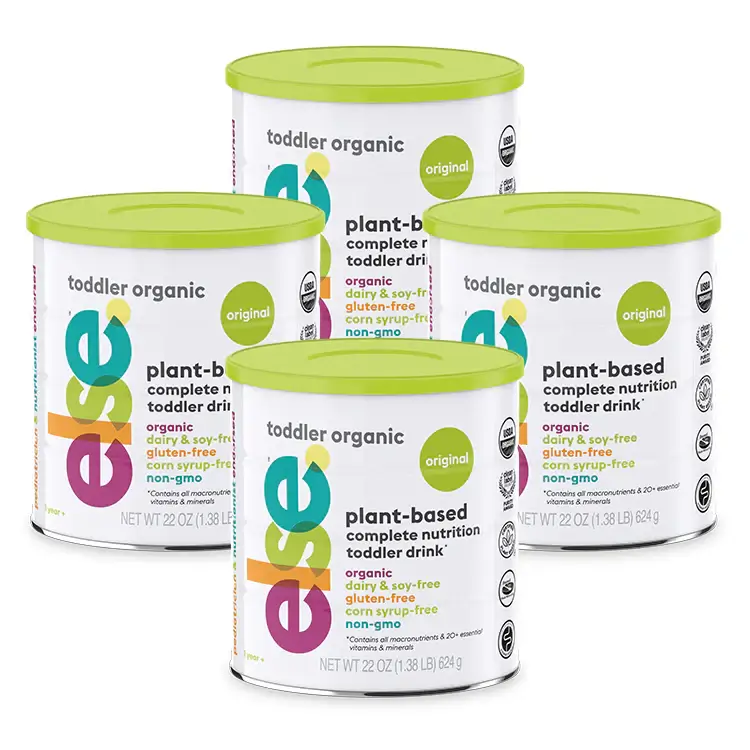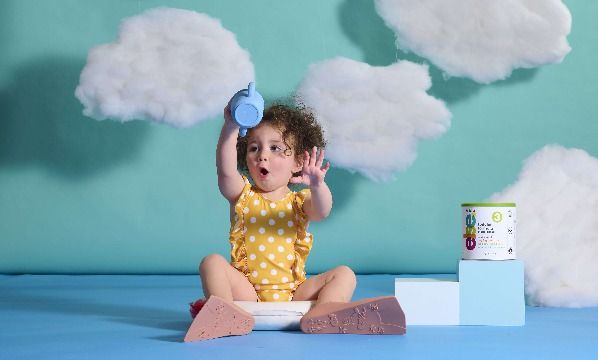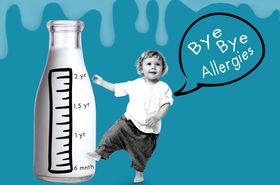How Changing Formula May Help a Gassy Baby
Uncover tips for managing a gassy baby by changing formulas and improving their feeding routine.
Updated May 17, 2024.

It’s normal for parents and caregivers to have a lot of questions about what’s considered normal for infant digestion. After all, infants are known to have a wide range of colors, textures, and smells associated with their digestive system. Any changes in digestive health can be alarming if you’ve never experienced them before and your child is too young to tell you what’s going on.
One of the most common digestive health changes among infants is gassiness. Regardless of what they’re fed, many infants will experience an increase in how gassy they are, which may be accompanied by other symptoms like bloating and fussiness.
If this has been the experience with your baby, you may be wondering how to manage it and whether you can do anything.
What Should I Know About Handling Infant Gas in My Bottle-Fed Baby?
The first thing to know about gassiness in bottle-fed babies is that it’s important to understand some of the signs. When a baby is experiencing more gas, it may not be obvious. In other words, there are other symptoms to look out for so that you can address increased gassiness if it appears in other areas of your baby’s behavior.
Some of these common symptoms include:
Increased Crying and Fussiness
Babies who are experiencing more gas will very often become fussier. And who can blame them? Having more gas can be extremely uncomfortable, especially for developing tummies who aren’t used to what it feels like and don’t understand what it means.
» Explore alternatives to baby formula
Abdominal Bloating
A common symptom of increased gassiness for someone of any age is a bloated stomach. This symptom can be more noticeable in infants because of their smaller body size.
When a baby has a distended abdomen or appears visibly larger and sometimes even firmer to the touch than usual, increased gas is frequently to blame.
Not surprisingly, this trapped intestinal gas can cause pressure to build up in the baby’s abdomen and become uncomfortable.
Clenched Fists and Toes
When babies are experiencing discomfort, particularly when it’s affecting their digestive system, they sometimes clench their toes and fists. This is a sign of distress.
In addition to clenching, infants with increased gassiness may also appear red in the face, arch their back, pull their legs up toward their chest, become squirmier after eating, or show other physical signs of tension.
Hiccups
It’s normal for infants to have hiccups more often than adults because of their digestive system immaturity. But if you notice that your baby is having more hiccups than usual, this can indicate that their diaphragm is irritated. One possible reason for this is increased gassiness.
» Discover the key signs that formula isn't suitable for your baby
Is My Baby's Gas Causing Colic?
It’s very common for babies who are experiencing increased gas to experience colic or excessive crying for no apparent reason. Colic is generally diagnosed if your baby is crying for over three hours a day, more than three days a week, and for three weeks or longer.
Confirming that your infant isn’t more irritable because of a wet diaper, hunger, or tiredness is important in identifying true colic.
Overall, colic can happen for many reasons, but increased gassiness is a very common one. Having a lot of gas can be uncomfortable and even painful for babies, so it's no wonder why they might become colicky.
» Learn more about colic and infant formula
How to Deal with a Gassy Baby
Once you are aware of what could be causing gassiness in your baby, the next sensible question is how to manage it for them.
One of the biggest contributors to gassy babies is feeding. Fortunately, there are some things you can do with feeding to help reduce your baby’s gassiness.
Allow Formula to Settle
First, consider the preparation of your baby’s formula. If it’s a powdered formula, allow it to settle after mixing before feeding it to your baby. Blending or voraciously mixing the formula into liquid can create air bubbles, promoting gas when your baby consumes it.
You can also gently tap the bottle, right-side up, on a table to help eliminate bubbles. Additionally, use slightly warm water to mix powdered formula, as cold water isn’t as effective at dissolving it.
Once your baby is done eating, don’t forget to burp them. To do this, hold them with their head on one of your shoulders, careful not to block their airway, and gently pat their back with one hand.
» Discover why you should switch to a soy-free formula
Don't forget to Burp the Baby!
This helps break up any air bubbles trapped in their abdomen and allows them to be released. You’ll hear an audible burp and possibly multiple burps. You can also burp your baby by sitting them on your lap, supporting their chest, and gently patting their back.
3 Bottle-Feeding Tips to Help Prevent Gas
Having more gas can result from several factors for babies, but feeding is often a good area to focus on. For bottle-fed babies, there may be ways to offer a bottle that can help minimize unwanted gas.
1. Try Anti-Colic Bottles
Bottles with physical characteristics that can help improve how bottle-feeding impacts an infant’s digestive health are a great start. They are designed to help reduce how much air is ingested when a baby eats. This matters because when air is swallowed during feedings, it can become trapped and lead to discomfort.
2. Hold Baby's Head at an Angle
If gas is an issue for your baby when feeding, try offering a bottle that has an angled, vented, or collapsible style. It can also be helpful to hold your baby’s head at a 45-degree angle and ensure the bottle is angled downward into their mouth. Be sure to check that the bottle’s nipple is filled with formula and isn’t empty, indicating that it’s full of air instead.
3. Choose the Right Bottle Nipple
Choosing an age-appropriate nipple for your baby’s bottle is also important. A nipple that’s too small for them can restrict the formula flow and increase the amount of air ingested when feeding. A nipple that’s too large can cause your baby to consume too much formula too quickly, which can also cause excessive air consumption.
When to Switch Formula Because of Gas
Sometimes, even making changes to bottles, nipples, and formula preparation methods isn’t enough for some babies to experience relief from increased gassiness.
As such, you might wonder when to switch formula because of gas. This is a worthwhile question, as sometimes the formula itself could be the main culprit for a baby’s digestive discomfort.
For instance, many babies are intolerant or allergic to milk protein, making milk-based formulas problematic. Instead, there are plenty of dairy-free formulas for gassy babies that may be more tolerable, made from other proteins like soy. Just be sure your baby doesn’t have a soy allergy, as this can be another common allergen.
In the near future, Else Nutrition will make dairy-free and soy-free infant formula available. Currently, you can find Else toddler formula for older babies, which is made using almond, buckwheat, and tapioca.
As for when to make a switch, it’s best to speak with your pediatrician to ensure the new formula is appropriate for your baby. If you’ve tried some of the other suggestions for improving gassiness and your baby still suffers from side effects when eating, a formula change may be best. The old and new formulas need to be tapered to prevent the worsening of your baby’s digestive side effects.
Furthermore, changes in stool, such as the presence of blood or mucus, can support the need to make a formula change.
Easing Baby's Gas Discomfort
Overall, many factors may be at play when it comes to your baby’s increased gassiness. Their little tummies are sensitive, and worsened gas may be triggered by anything from the type of formula to the formula preparation method or the type of bottle or nipple you use.
Nobody wants their baby to experience uncomfortable gas, and exploring these formula and feeding-related factors may prove to be helpful.
The content and advice provided in this article are for informational purposes only and are not a substitute for medical diagnosis, treatment, or advice for specific medical conditions. Always consult a pediatrician to understand the individual needs of your child.











